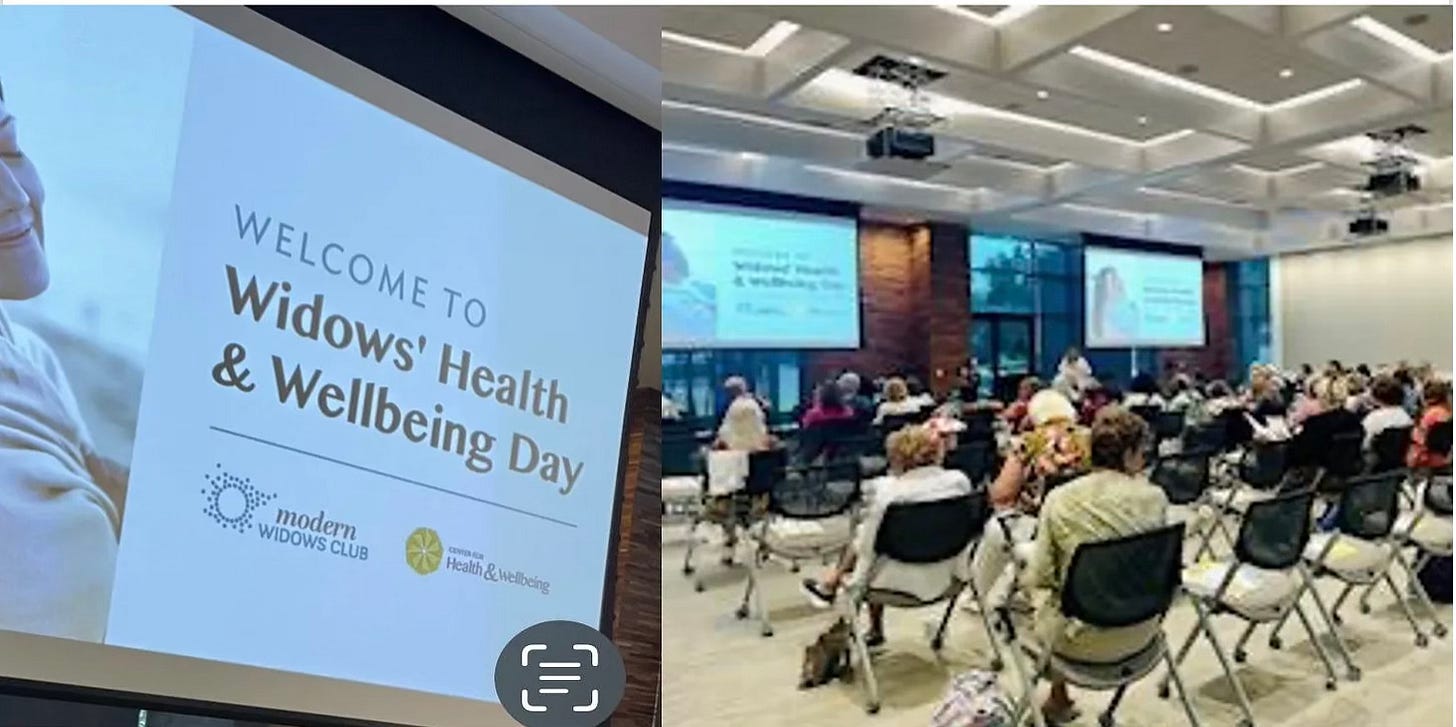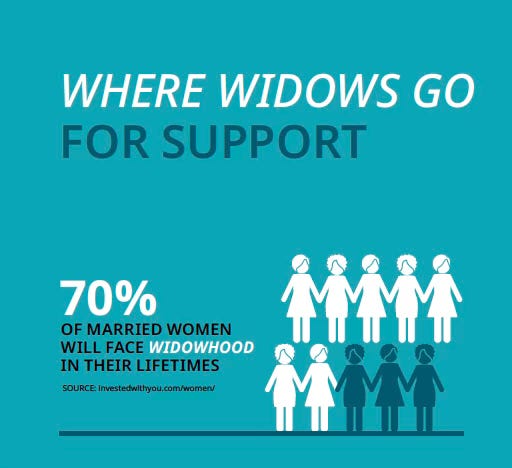Hi. This week two stories were shared with me that I wanted to share with our beloved Widow Life subscribers - all 15,000 of you - it's amazing, thank you for being here!
#1 - A Harsh Truth
At a recent 60th birthday celebration for one of our Trustee Board members, I found myself in conversation with her daughter and her daughter’s boyfriend. As we talked about the work of Modern Widows Club®️ | The Movement for Widow Care (MWC), I mentioned a startling discovery I’d made: there’s more trauma research available for women experiencing prison than for women experiencing widowhood. That statement alone raised eyebrows, but the conversation soon delved deeper into why certain women’s causes receive more attention, funding, and societal awareness than others.
I shared insights from my research into the history of advocacy for domestic violence and human trafficking awareness. It took a minimum of 20 years of relentless effort before those movements broke through to mainstream consciousness, gaining the critical support they have today.
Then I posed a comparison that struck a chord. “When a woman experiences domestic violence or escapes human trafficking, support is readily available because these causes have been championed, funded, and firmly embedded in our collective awareness. But when a woman becomes widowed, finding support often feels like an uphill battle. The resources for widows are sparse, limited to short-term grief support, typically lasting just a year or two. After that, widows are often left to navigate a life-changing reality on their own.”
The daughter looked at me, her mouth open in shock. “You’re absolutely right,” she said. “When I went through a domestic violence incident, help was there immediately. But when my husband died by suicide, it was like everything stopped. There was no support network for me anymore. Even the domestic violence support ended because he was no longer considered ‘an issue.’”
Her words underscored a harsh truth: widowhood, despite being a universal and inevitable human experience, remains overlooked and underfunded. This conversation reaffirmed for me—and for her—why the work of Modern Widows Club is so critical. We are not just building a support network; we are creating a movement to ensure that no widow is ever left to walk her journey alone.
#2- A Legacy of Support
As the founder of Modern Widows Club, one of the greatest honors of my role is meeting the incredible women in our network who feel called to step forward and volunteer. Recently, I had the privilege of interviewing a member interested in joining our Wister® Prayer Team—a team dedicated to accepting prayer requests from widows in our community. (By the way, "Wister" is our trademarked term for widow sisters, a title that unites us in shared understanding and strength.)
During the interview, as is customary for our Wister® Prayer Team applicants, I asked about her faith journey and background. She shared that she had spent many years working alongside her late husband in ministry. Yet, after becoming widowed, she was surprised and deeply saddened by the lack of support she received. She had hoped her faith community would rally around her, helping her find purpose again. But that support never came.
When she received our email calling for volunteers to join the prayer team, she immediately responded. “This,” she said, “I can do!”
As our conversation unfolded, she asked me a poignant question: “Who do you think is doing a good job of supporting widows in the religious space?”
Based on decades of research and countless conversations with widows over 25 years, my answer was clear. I shared that the Jewish synagogues and the Relief Society within the Church of Jesus Christ of Latter-day Saints (LDS) stand out for their structured and meaningful care for widows.
Her voice lifted as she said, “I have to tell you a story about my great-grandmother.” She explained how her great-grandmother became a young widow in the 1800s, left with six children to raise in the Midwest. “With no support available, she packed up her family and moved to Utah after hearing that the Relief Society might help women like her.” True to its mission, the Relief Society provided the support she so desperately needed.
I was struck by this story—proof of the enduring power of widow support systems dating back to the 1840s. The Relief Society, founded in 1842, is one of the largest women’s organizations in the world. Founded by “Legendary Widow” Emma Smith, young and pregnant at the time, it stood for “relief of poverty, relief of illness; relief of doubt, relief of ignorance — relief of all that hinders the joy and progress of woman.”
That legacy of care and purpose for widows spans centuries, reminding us that our mission at Modern Widows Club is part of something much larger.
This encounter was a beautiful reminder of why we do what we do: to create a community of support and empowerment, ensuring that generations of future widows don't walk alone.
Keep reading with a 7-day free trial
Subscribe to Widow Life™ to keep reading this post and get 7 days of free access to the full post archives.







